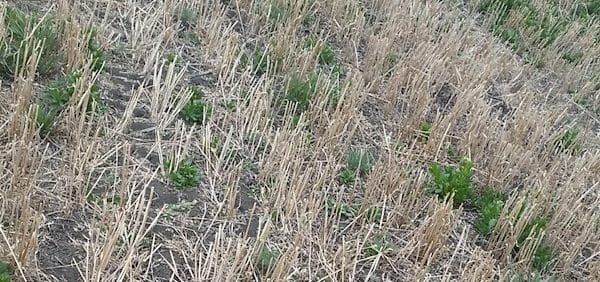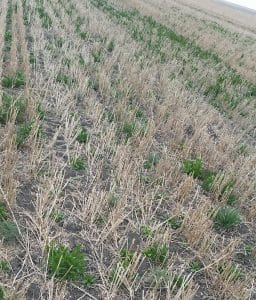Seed first or spray weeds? A fundamental truth: Weeds that emerge before the crop can be highly damaging to crop yield potential because they out-compete the crop for moisture, nutrients and sunlight. A small number of weeds (even just a few per square foot) emerging before or with the crop can be much more damaging to yield potential than a larger number of weeds flushing later. AAFC weed scientists Neil Harker and John O’Donovan estimated that the yield effect of one weed emerging a week before the crop is equivalent to that of 100 weeds emerging three weeks after the crop. When the crop emerges, all early weeds need to be dead. Cool, wet conditions that are holding up seeding can also reduce herbicide efficacy, but early weed control with lower efficacy is generally preferable to no control at all or late control with higher efficacy — as long as weeds are present and not frost damaged. READ MORE
Spraying weeds in cool conditions. Early weed control with lower efficacy is generally preferable to no control at all or late control with higher efficacy — as long as weeds are present and not frost damaged. Good tips here. Growers who want to do a preseed burnoff and then get seeding may not want to wait 3-4 days for the weeds to recover from a frost. In this situation, growers should recognize that if they go ahead and spray right away, efficacy may be reduced. However, even with the lower efficacy, doing the burnoff and then seeding will likely provide a higher return than seeding without the preseed burn and letting all the weeds compete until an early in-crop application. Consult with your supplier for information on product performance in these conditions to determine the best approach. READ MORE
Tank mix options for pre-seed burnoff. Tank mixing is an important step in preventing herbicide resistance in weeds, and the pre-seed window is a good opportunity to use a tank mix rather than just straight glyphosate. Tank mix options for glyphosate ahead of canola.


